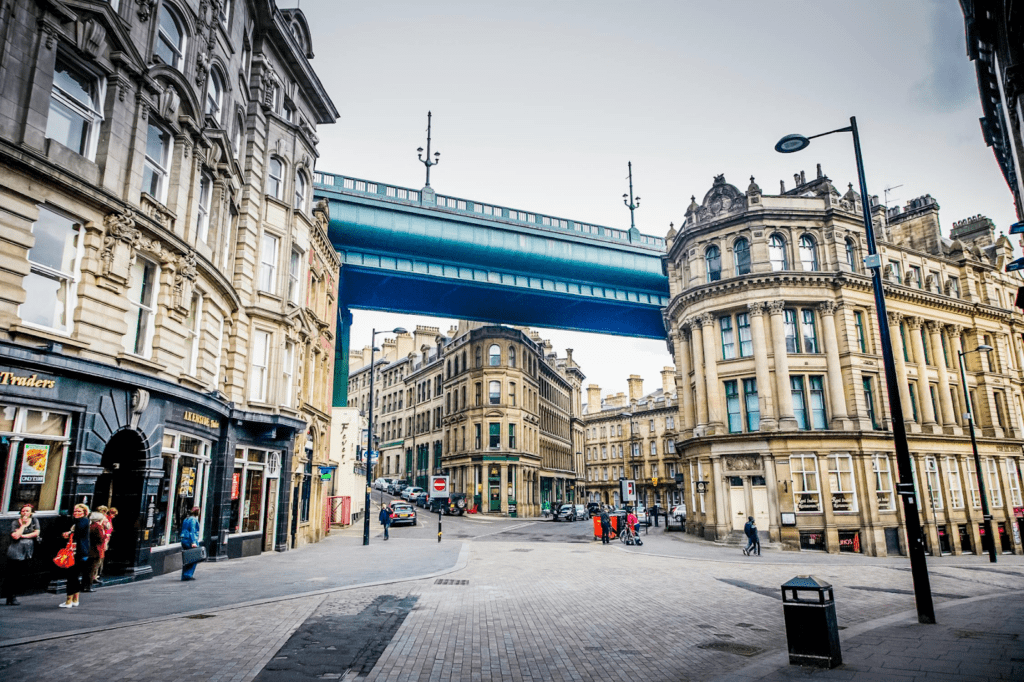The British high street has long symbolised local identity, economic activity, and social interaction. For generations, it was where people did their weekly shopping, caught up with friends, and felt part of a wider community.
But as digital shopping habits took hold, footfall dwindled in many town centres, leaving boarded-up storefronts and struggling local businesses. Now, councils, community groups, and independent traders are working to turn things around.
Rather than fighting against the digital age, they are learning to adapt, blending innovation with tradition to create a modern high street that people want to visit.
Pop-Up Shops and Short-Term Leasing
One of the biggest hurdles for independent businesses has always been the high cost of long-term leases. With commercial rents often out of reach for small traders, vacant shops have become familiar on high streets across the UK.
To tackle this, councils and landlords are turning to short-term leasing models. These allow independent retailers, start-ups, and artisans to test the waters without committing to a costly contract.
Pop-up shops, in particular, are proving to be an effective solution. They bring variety and novelty to the high street, encouraging curiosity and impulse visits. The promise of something unique draws in shoppers who might otherwise stick to online purchases, whether a local artist showcasing their work or a specialty food vendor offering handmade goods.
Many businesses that once operated solely in the digital space now recognise the value of a physical presence. Just as e-book retailers have opened brick-and-mortar bookshops and streaming services have launched experiential pop-ups, industries built around digital entertainment are also finding new ways to engage with consumers.
Gaming lounges offering retro arcade machines, VR experiences, and even curated spaces where visitors can play online slot games in a social setting are emerging as part of the evolving high street. These interactive spaces unite people in ways that digital platforms alone cannot, adding another layer of engagement to town centres.
Short-term retail spaces bridge the convenience of online shopping and the sensory experience of in-person browsing. Whether it’s a temporary gaming café, an independent clothing brand testing a storefront, or a homegrown bakery selling directly to customers, pop-up shops keep high streets fresh, exciting, and full of life.
Cultural Events That Attract Footfall
Retail alone is no longer enough to sustain a thriving high street. People need reasons beyond shopping to visit town centres, and cultural events provide just that. Markets, street performances, and seasonal festivals breathe life into high streets, making them places people want to spend time.
Councils are working closely with community groups to organise events that cater to a broad audience. Music festivals, artisan markets, and food fairs create an atmosphere online retail simply can’t replicate.
Some towns even embrace night-time economies by extending shopping hours and hosting evening events. A family-friendly festival on a Saturday afternoon might draw one crowd, while a late-night art exhibition caters to another. This level of variety is what keeps town centres dynamic and relevant.
The impact of these cultural events goes beyond a temporary boost in foot traffic. Once people rediscover the high street as a place of engagement rather than just commerce, they are more likely to return, even when there isn’t an event. Regular activities create a habit of visiting. Over time, they helped rebuild the sense of community that many high streets had lost.
Blending Digital Convenience with Physical Retail
Modern consumers have grown accustomed to digital convenience. Mobile apps allow them to order meals, book taxis, and play mobile casino games from anywhere. While this shift in behaviour has often been blamed for the decline of high streets, it is also part of the solution. Forward-thinking businesses are using digital tools to complement physical retail rather than compete with it.
Click-and-collect services, for example, bridge the gap between online and in-store shopping. Customers can browse products online and pick them up in person, eliminating delivery times while offering the ease of digital browsing. Some independent retailers are also leveraging location-based mobile marketing. Push notifications alert nearby shoppers to exclusive in-store discounts, drawing them into physical spaces they may have otherwise walked past.
Local loyalty schemes have also returned, with mobile apps replacing old-fashioned stamp cards. Instead of generic discount offers, shoppers receive personalised deals based on their purchasing history. This level of engagement gives high streets a competitive edge over faceless e-commerce giants, reminding consumers of the benefits of shopping locally.
Redefining the Purpose of the High Street
The future of the high street isn’t just about reviving retail. It’s about redefining its purpose. Many town centres are transforming into multifunctional spaces, offering a mix of shopping, leisure, and work opportunities.
Co-working spaces, wellness hubs, and independent cafes are moving into areas once dominated by traditional retail. This shift acknowledges that people want more from their town centres than just shops. They want experiences, community, and convenience.
Some councils are even repurposing underused retail spaces for residential use. Bringing more people to live in town centres increases local spending and naturally generates foot traffic. A high street where people live, work, and socialise is far more sustainable than one that relies solely on consumer spending.
Final Thoughts
The decline of the high street was never just about online shopping. It was about convenience, shifting habits, and a lack of adaptation. But now, communities and councils are proving that town centres can be more than just places to buy things. They can be spaces where people connect, discover, and spend time.
High streets are becoming relevant again with the right mix of retail, culture, and digital integration. As these efforts continue, the high street may once again become the heart of British towns, not just a relic of the past.
Read More: click here
